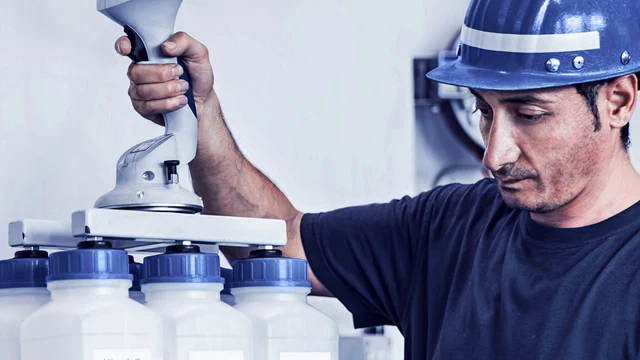
Abril Industrial Waxes
Abril Lubricants in Thermoplastic Polymer Processing
The range of lubricants manufactured by Abril, first started in 1945 and based on differing synthetic waxes, make their own contribution to the success of the polymer industry.
The following is an overview of our lubricant range and applications.
Use of these lubricants typically provides the following benefits:
- Reduction of localised frictional overheating
- Reduction of melt viscosity without affecting performance of the finished product
- Higher output through reduced cycle times
- Even dispersion of additives
- Fewer rejects
External Lubrication
This is achieved by lubricant
- applied to the external surfaces of a polymer formulation in the solid phase prior to a heating and masticating process
- exuding to the surface in minute quantities immediately after injection moulding orextrusion
In the former case the lubricant prevents localised overheating from point contact under high pressure and allows improved pressure transmission and heat transfer in the processing equipment. In the latter case the surface effects are beneficial in enhancing the appearance of the article and improving scuff resistance and, often in the case of films, providing slip and anti-block properties.
Internal lubrication
To be effective in this role the lubricant needs to be evenly dispersed throughout the polymer matrix. The wax lubricant is substantially different to the polymer in its rheological properties. On heating, the polymer changes slowly from a rigid material to a less rigid material and eventually to a very hot molten mass of high viscosity, which requires considerable energy to move, and displays elastic properties. These attributes are not conducive to easy moulding or extrusion and lead to a great deal of stress in the finished article after rapid cooling. For example, this latter feature will diminish the heat resistance of a moulding as the polymer approaches its softening point and the in-built stresses start to be relieved.
On the other hand the wax based lubricant exhibits crystalline behaviour at its melting point. The lubricant converts rapidly from a rigid solid to a highly mobile liquid having high lubricity. In the case of Abril 10 this conversion occurs at 140°C. This temperature is low in terms of polymer melt temperature but high in terms of the ambient temperature range in which nearly all thermoplastic moulding are expected to perform. The synthetic wax-based lubricant then lubricates the motion of long polymer chains and makes the heated mass more mobile. This results in easier working at lower temperatures giving better mould definition and appearance. As the lubricant exudes a small amount onto the surface the other benefits of enhanced appearance and scuff resistance are realised.
Additives
The "wetting" capabilities of a synthetic wax based lubricant are of considerable assistance in achieving an even dispersion of pigments, fillers and reinforcing agents in the thermoplastic polymer. By becoming a mobile liquid at an early stage in the process, the lubricant helps to "carry" the additives into the polymer matrix. At the same time the shear forces of the process disperse the additives evenly among themselves and the polymer.
The result is more homogeneous blends, even performance throughout the moulding and fewer uneven stresses. All these factors will make a positive contribution to the quality of the finished article, be it film or moulding.



